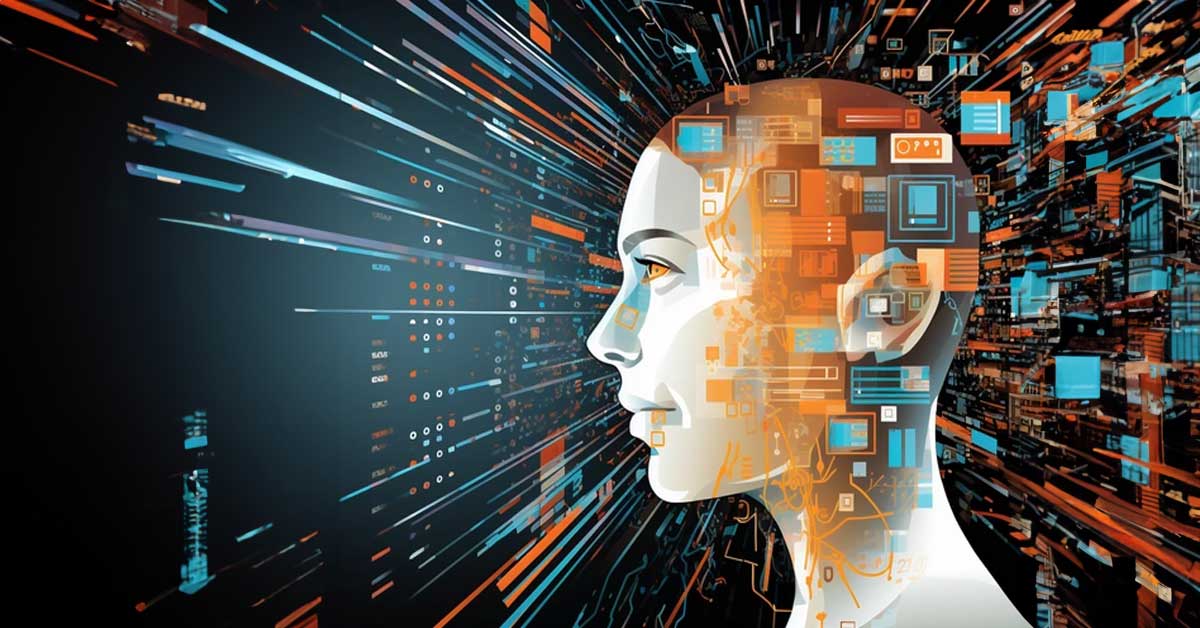To work with most digital devices, you need an Operating System. It helps give users a user interface or UI to do the tasks that they need with the machine. OS is basically the middle guy that connects everything. We talked about 'The Evolution of Operating Systems'.
But what if we exchange this operating system with AI? Then you'll get an AIOS.
An Artificial Intelligence Operating System (AIOS) defines a type of system software responsible for overseeing computer hardware and software resources while delivering standard services to computer programs through general artificial intelligence.
This AI-driven operating system is a fundamental part of a computer system's software suite. It distinguishes itself by its ability to learn from your distinct lifestyle, continually evolving and adjusting to your evolving requirements. Rather than appearing as conventional analytical software, it feels more akin to an intelligent companion.
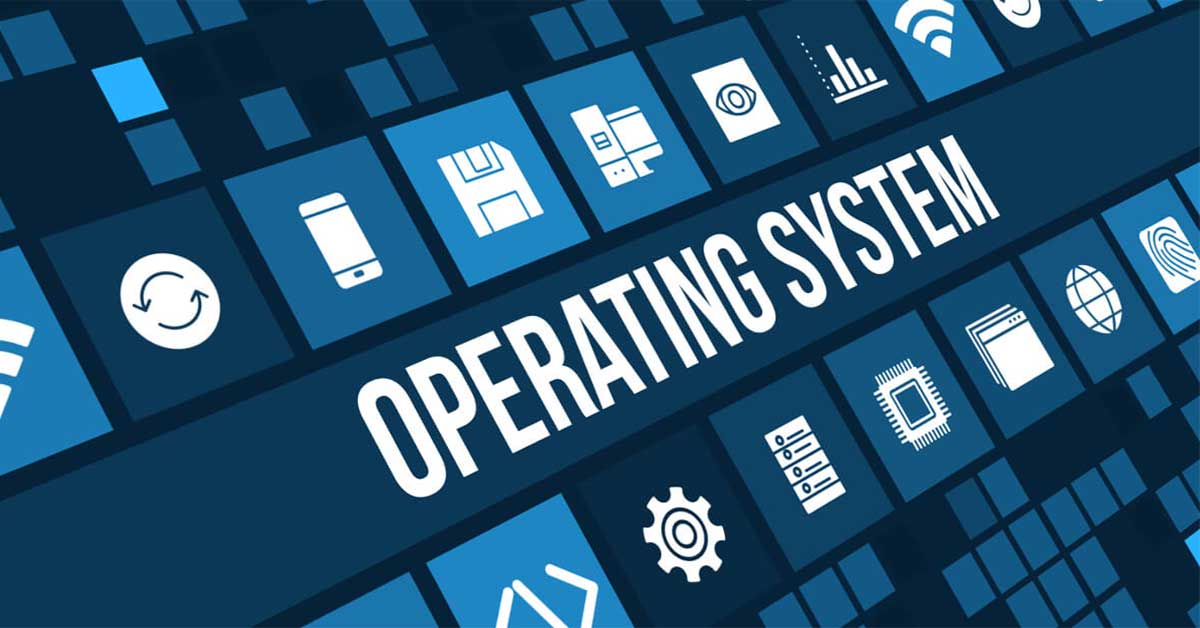
Current Operating Sytems Vs. AIOS

To comprehend the groundbreaking nature of AI operating systems, let's compare them with the ones we currently use, such as Windows, MacOS, iOS, and Android. While these systems have become more intuitive and user-friendly, they still operate on rigid rules and fixed logic patterns.
They are designed with a hypothetical 'average' user in mind but often fail to provide a deeply personalized experience. Even now, Companies that build OS are trying hard to include AI features like Copilot, but more is needed to become an AIOS.

Despite advancements, today's operating systems are swarmed with issues like app crashes, inefficient menu designs, and a lack of adaptability to our changing needs. These shortcomings have become accepted inconveniences. How about an OS that can sort these issues by itself?
What is AI Operating Systems (AIOS)
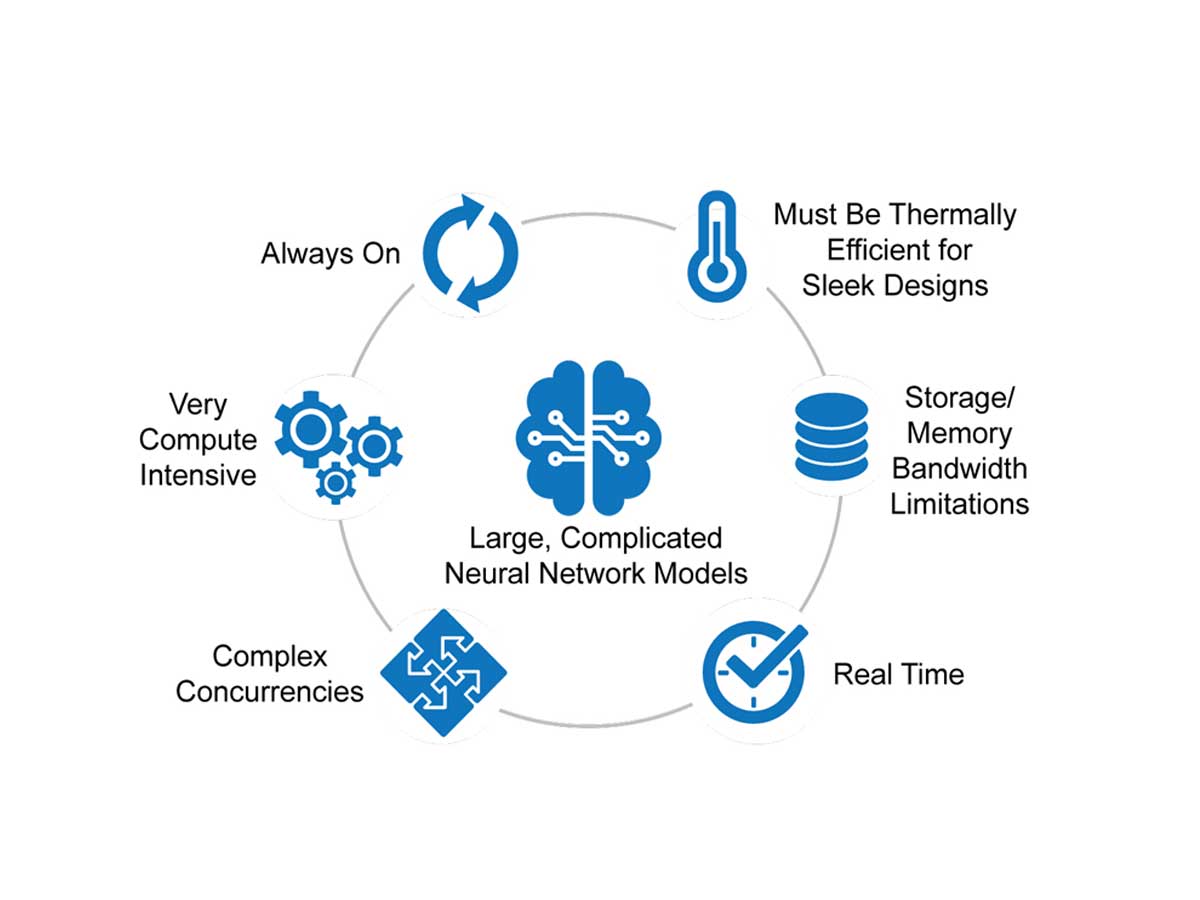
The AI Operating System fundamentally incorporates artificial intelligence into its architecture, enabling it to offer dynamic and interactive features that surpass traditional capabilities.
This is a significant step beyond current operating systems with AI-powered features such as AI Assistants (Siri, Alexa, or Google Assistant) added to their regular frameworks.
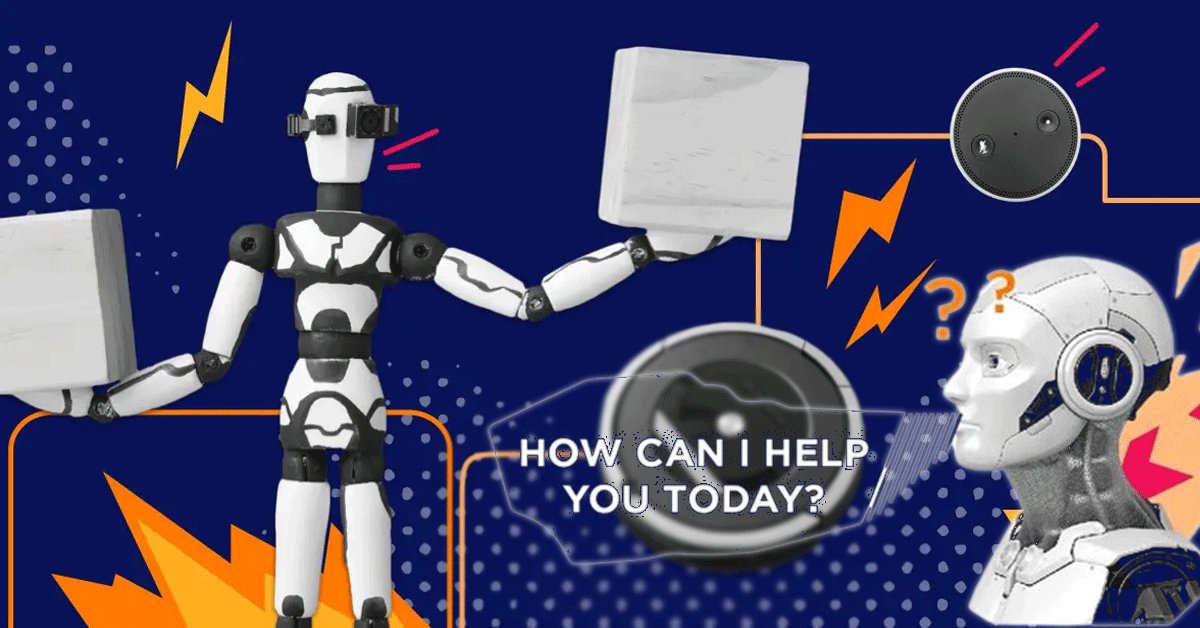
In an AI Operating System, the AI component is an essential part of the system's kernel, allowing for core functionalities to be adaptive rather than limiting AI to peripheral applications.
Key capabilities an AIOS must have:
- Tailored Personalization: The system learns from each user's unique application usage, workflow preferences, and interactions, customizing the experience through AI algorithms.
- Contextual Understanding: The operating system continuously processes inputs like time, location, and biometric data, gaining situational awareness to offer personalized recommendations and automated actions at the right moment.
- Predictive Anticipation: By analyzing user habits, the AI Operating System can proactively ready applications and information, often before the user realizes their need.
- Adaptive Self-Optimization: It intelligently manages hardware resources, enhancing performance by prioritizing frequently used applications and efficiently reallocating system resources like bandwidth and storage.
- Natural User Interaction: The system is designed for interactions through conversational language, understanding user commands, posing questions for clarity, and conversationally providing information.
There are more features that AIOS must have.
- Monitor and optimize their
- own performance
- Smart Process Management
- Smart Memory Management
- Predicting results
- Using the right resources
- Making sure that resources are available by predicting before a process asks for it
- Suggesting alternative options to a problem.
- Search internally and externally for information to help themselves.
- Deriving a solution to the problem by themselves
- Healing themselves and getting immune to viruses after the attack.
- Communicate to other OS
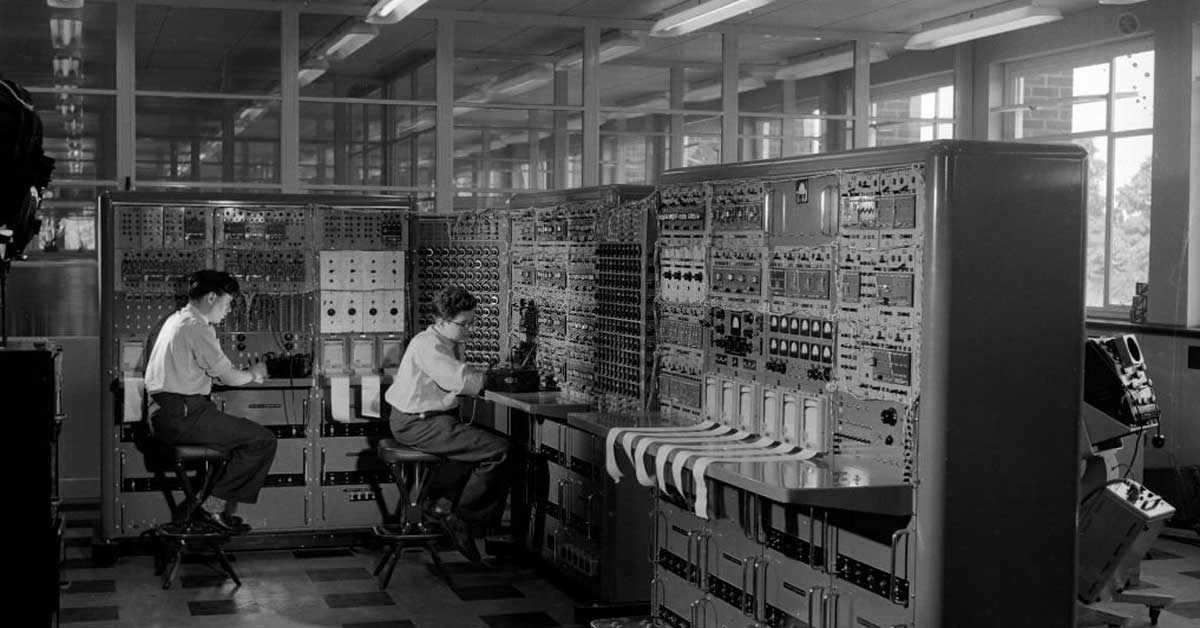
The AI Part of AIOS
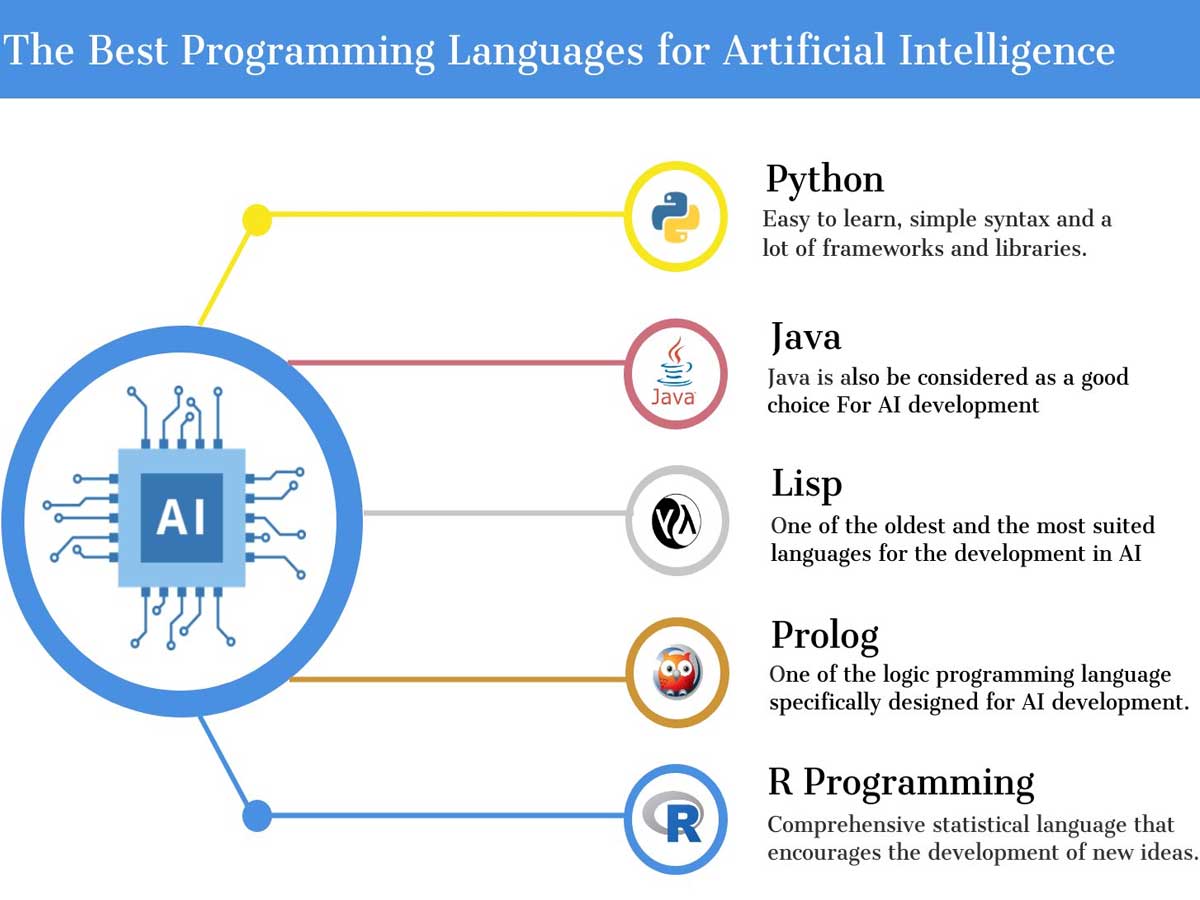
AI operating systems are specifically formulated for AI applications and systems, providing the necessary infrastructure, tools, and capabilities to create high-performance AI programs.
These operating systems are tailored to meet the distinctive needs of AI applications, including the processing of substantial data volumes (big data), pattern recognition, and decision-making.
They employ refined algorithms, specialized hardware, and optimization strategies to maximize efficiency in handling AI-specific tasks.
One of the key advantages of these specialized operating systems is their ability to support AI models in being fully flexible and scalable. They offer comprehensive support for various technologies, including machine learning, deep learning, and Natural Language Processing (NLP).
Moreover, these systems include hardware support for Tensor Processing Units (TPUs) and Graphic Processing Units (GPUs), increasing their overall performance.

They also play a critical role in the processing and analyzing of data gathered from the Internet of Things (IoT), enabling a thorough examination of the data for insights and decision-making.
Prior to the advent of AI operating systems, developers faced the challenge of manually customizing algorithms to specific hardware and managing large datasets and complex algorithms independently before integrating AI into existing systems.
The emergence and increasing accessibility of AI operating systems have lifted many limitations, unlocking the full potential of AI systems and applications.
Artificial Intelligence (AI) can be divided into two main categories: Weak AI and Strong AI. Weak AI, or narrow AI, is designed to execute specific tasks, such as responding to user queries or playing games like chess. It is specialized in one particular area and needs more versatility.

In contrast, Strong AI can perform a diverse range of tasks and can learn and adapt to new challenges independently.
The development of AI Operating Systems (AIOS) primarily employs techniques derived from Strong AI. This includes the use of fuzzy logic, expert systems, neural networks, pattern recognition, prediction, and other advanced AI methodologies.

These systems are crafted to handle various aspects of hardware and software management, along with general system services. The key distinction of an AIOS from conventional operating systems lies in its intelligent management capabilities.
An AIOS leverages the computational intelligence of a device to efficiently address complex problems.
The evolution of operating system architecture has progressed from the era of IBM Mainframes to modern systems like Linux and macOS. AI is set to become a pivotal element in the future development of operating system architecture.
This shift has been partly seen in systems like Windows Metro, which incorporates certain AI features into its operating system framework.
Why are special operating systems for AI systems required?

AI systems necessitate specialized operating systems due to their unique requirements that conventional operating systems cannot fulfill. AI operating systems are specifically designed for AI applications, providing essential tools and functionalities tailored for optimal performance.
These systems include specialized libraries for machine learning, resources for distributed computing, and effective resource management. Without these capabilities, the development and deployment of AI applications would be significantly more challenging and time-consuming.
Let's explore the limitations of standard operating systems in supporting AI systems:
- Optimization Deficit: AI systems demand high levels of performance optimization across various areas, including algorithms, compilers, memory, and hardware. This optimization is vital for efficient data processing and managing large datasets.
- Insufficient Power Resources: AI systems require considerable computational power, storage, and memory management, which standard operating systems struggle to provide. This shortfall can lead to issues like system crashes, slow response times, and failures.
- Delayed Processing Capabilities: Conventional operating systems fall short in providing the real-time processing power essential for AI systems. Efficient AI functioning requires low-latency communication between hardware and software, minimizing data processing delays across networks.
- Lack of Integration Facilities: Normal operating systems often lack the necessary integration features crucial for AI systems. Proper integration is key to enabling AI systems to access and transfer data effectively between file systems and databases.
- Inflexibility: A standout feature of AI is its adaptability and precision in task execution. Users can tailor AI systems to specialize in specific tasks, ensuring the system knows exactly what to do and how to do it efficiently.
How do these AIOS systems work?
The architecture of this operating system comprises three main components: the kernel, shell, and system services. Users interact with these services through a terminal interface. These services contain a wide range of functions, including user authentication, authorization, scheduling, file management, and reporting.
The kernel is designed to be highly scalable, capable of running independently of the underlying technology stack and abstracting the container from its specific implementation. This allows for seamless deployment of containers across various cloud environments.
This operating system is particularly suited for AI data modeling, machine learning, and deep learning applications. It efficiently processes and analyzes data for the training, testing, and execution of AI models.
The system can select the appropriate container equipped with the necessary technology stack for analyzing machine learning models, which could be based on platforms like Tensor Flow, Keras, Caffe, sci-kit-learn, or R.
One of the key strengths of this AI-based operating system is its ease of integration with various data sources. It leverages elasticity patterns to scale effectively across multiple nodes and manage storage. The system is imbued with self-correction, self-optimization, and automatic scaling features.
Additionally, the operating system includes discoverability services for locating various services, functions, models, data sources, and technological components. It also features an app store, akin to traditional App Stores, where vendors and developers can publish easily deployable applications within this ecosystem.
The Process of Developing an AI Operating Systems
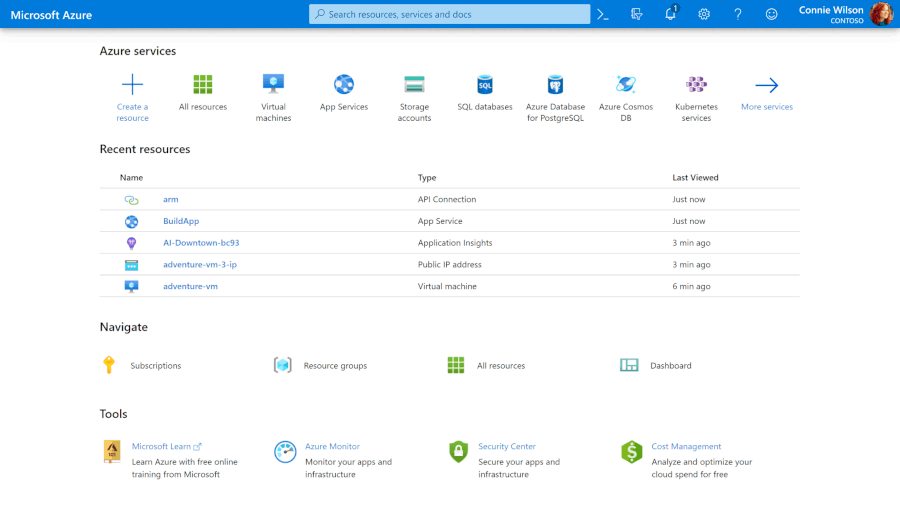
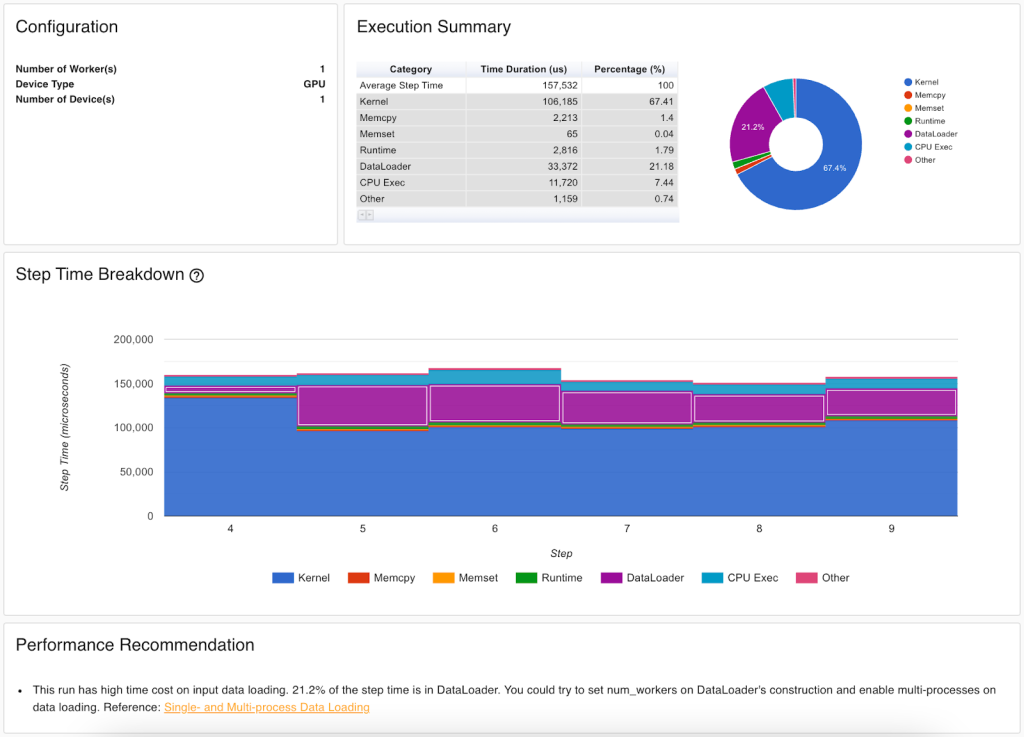

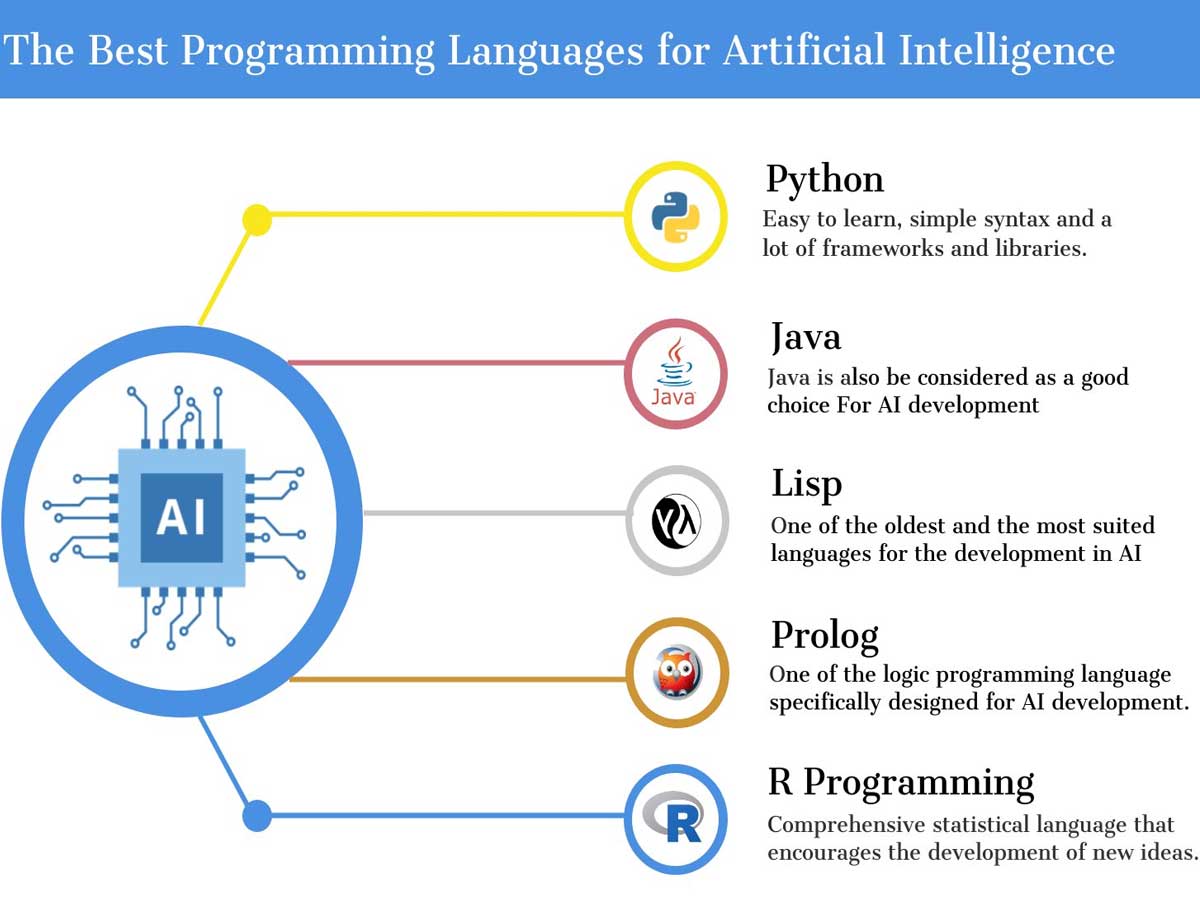
Creating AI operating systems is a complex endeavor typically undertaken by experienced data scientists and computer science professionals.
This process involves developing software stacks, implementing algorithms, and integrating them with hardware components. Common programming languages like Python and a blend of patience and creativity are often utilized to navigate the challenges that arise.
The effort invested in developing these systems is justified by their significant advancements in keeping pace with rapidly evolving technology. AI operating systems, similar to macOS, iOS, and Android, have transformed our interaction with devices.
Intelligent virtual assistants, such as Siri on iOS and Cortana on Android, enable us to set reminders, shop on Amazon, or control home appliances with simple voice commands.
For those interested in the development stages of these systems, here's a brief overview:
- Building Core Components: The process starts with constructing the foundational elements such as system libraries, drivers, and the kernel, essential for running AI applications.
- Incorporating AI Features: Following the establishment of the base, the next phase involves designing and integrating AI-specific functionalities. This typically includes machine learning frameworks, natural language processing tools, and neural network libraries.
- Testing and Fine-tuning: After assembly, the system undergoes extensive testing and optimization to ensure it adheres to performance and stability standards. This can involve both automated and manual testing, including putting the system under high-stress conditions to verify its robustness. User interface adjustments are also made for optimal navigation.
- Deployment and Ongoing Maintenance: Once refined and tested, the operating system is released for customer use. Despite thorough testing and optimization, minor issues and bugs may emerge over time. Therefore, continuous maintenance and regular updates are essential to align the system with current market trends and user needs.
If you are interested on the development here are some examples fro AIOS Dev tools.
Examples of AIOS development tools
Navigating the world of AI operating system development can seem overwhelming, but numerous tools and AI-oriented services are available to streamline the process.
From machine learning frameworks to cloud computing platforms and neural network libraries, there's a specialized tool for virtually every need.
Here are a few notable examples:
TensorFlow:
Developed by Linux, TensorFlow is a robust open-source software library for building and deploying AI applications. It supports a wide range of functionalities, including neural networks and deep learning algorithms. TensorFlow facilitates the deployment of AI operating systems on web browsers and portable devices. Its extensive developer community continually enhances its features.
PyTorch:
PyTorch, another open-source machine-learning framework, shares similarities with TensorFlow. PyTorch is dynamic computational graph is a standout feature, which allows for more efficient construction and training of machine learning models. It offers pre-built modules and functions, easing the development and testing of new AI algorithms.
Microsoft Azure:
Microsoft Azure offers a distinct approach as a cloud computing service. It provides various cloud-based services like storage, analytics, APIs, and more. These tools enable the development, testing, and deployment of AI applications through Microsoft-managed data centers.
IBM Watson:
IBM Watson is an excellent choice for those interested in creating AI platforms with Natural Language Processing (NLP) capabilities. It's particularly useful for developing chatbots and applications akin to ChatGPT. IBM Watson also offers comprehensive analytics and data visualization tools essential for crafting precise models.
Early Examples & Current Progress of AI Operating Systems
- First up is Black Swan, an Israeli team shaking things up. They've rolled out a nifty enterprise AI operating system. This isn't your everyday software; it's a powerhouse that juggles deep learning, machine learning, natural language processing, neural networks, and data operations. Think of it as a brainiac in the world of operating systems!
- Then there's Algorithmia’s AI OS, which made its debut thanks to Algorithmia's head honcho at the 2017 GeekWire Tech Cloud Summit. Their chat, "Building an Operating System for AI," wasn't just a talk – it was a peek into the future of smart systems.
- Don't forget about NeurOS. This isn't just another operating system; it's like the Swiss Army knife of AI. It's got everything: perception, learning patterns, memory you wish you had, imagination, and even prediction skills. Plus, it's built to be portable, scalable, and super flexible.
- Cognition is another cool kid on the block. It's not just an operating system; it's your new best friend. Acting as an intelligent assistant and electronic advisor, it's like having a personal genius to help you out. Need a shopping tip or a chat? Cognition has your back.
- Big dreams often start as 'what ifs,' right? That's true for these AI-integrated operating systems too. Just look at Google’s NotebookLM. It uses generative AI to whip up notes from your favorite web pages. It's like having a personal note-taker who knows what you need before you do.
- We're all waiting to see what Apple will unveil. Rumor has it they're cooking up a fully customizable OS that learns from you. It's going to be all about your preferences, habits, and even your feedback. Now, that's personalization at its finest!
- Startups are also jumping into the fray. Companies like Anthropic are building AI buddies like Claude that can chat, learn, and even think like a human. It's like having a chatty friend who's also a genius.
- OpenAI’s Code Interpreter is another game-changer. Imagine just telling your computer what you need, and bam! It creates it. From websites to apps, it's like having a personal coder at your fingertips.
Sure, we're not quite there yet with fully baked AI OS products, but the building blocks are getting stronger and smarter by the day.
The big deal about future AI OS isn't just the cool features; it's about making things simpler and smarter.

Advantages and Drawbacks of AIOS
Like any other system, there will be lots of benefits when we figure out the full potential of AI, especially when we figure out how to integrate it with operating systems. And like any other system, there will also be drawbacks and disadvantages. Especially, there are few because of the connection with artificial intelligence.
Benefits of AI Operating Systems (AIOS)
- AIOS is seen as the future of Operating Systems, offering significant advantages across various fields like defense, biomedical research, scientific endeavors, and education.
- One of the key strengths of AIOS is its capacity for continuous learning and self-improvement over time. Similar to how humans learn from past mistakes, AIOS evolves, enhancing its performance and capabilities.
- AIOS enables users to execute complex tasks quickly and efficiently. It simplifies modifications – there's no need to wait for official updates or restart devices. The OS updates itself in real-time, and alterations to the AI component do not compromise the system's structure, potentially reducing system crashes common in traditional operating systems.
- AIOS promises to improve operational speed, parallel processing, memory management, security, and user understanding, marking a significant leap from conventional Operating Systems.
Challenges and Limitations of AIOS
- However, there are concerns with AIOS. The ability to comprehend natural language means the OS could potentially access private communications like emails and calls, posing a privacy risk.
- The initial setup costs for AI-integrated systems are substantial due to the complex engineering involved. Maintenance and repairs also represent a significant financial investment.
- AI's automation capabilities could lead to increased human dependence on technology, potentially impacting future generations. Furthermore, the extensive computing power required for tasks like calculations, predictions, speech recognition, and decision-making could slow down the OS and necessitate additional external storage.
- Lastly, the AI's lack of common sense in reasoning might lead to user dissatisfaction, highlighting a limitation in the current AIOS technology.
AI Operating Systems (AIOS) will be a game-changing moment with their rising capabilities. But with great power comes great responsibility. The folks behind AIOS have a big job shaping our future. It's not just about making cool tech; it's about doing it right.
That means inclusive design so everyone gets a seat at the table, sticking to values like transparency and privacy, and making sure these systems are safe and ethical.
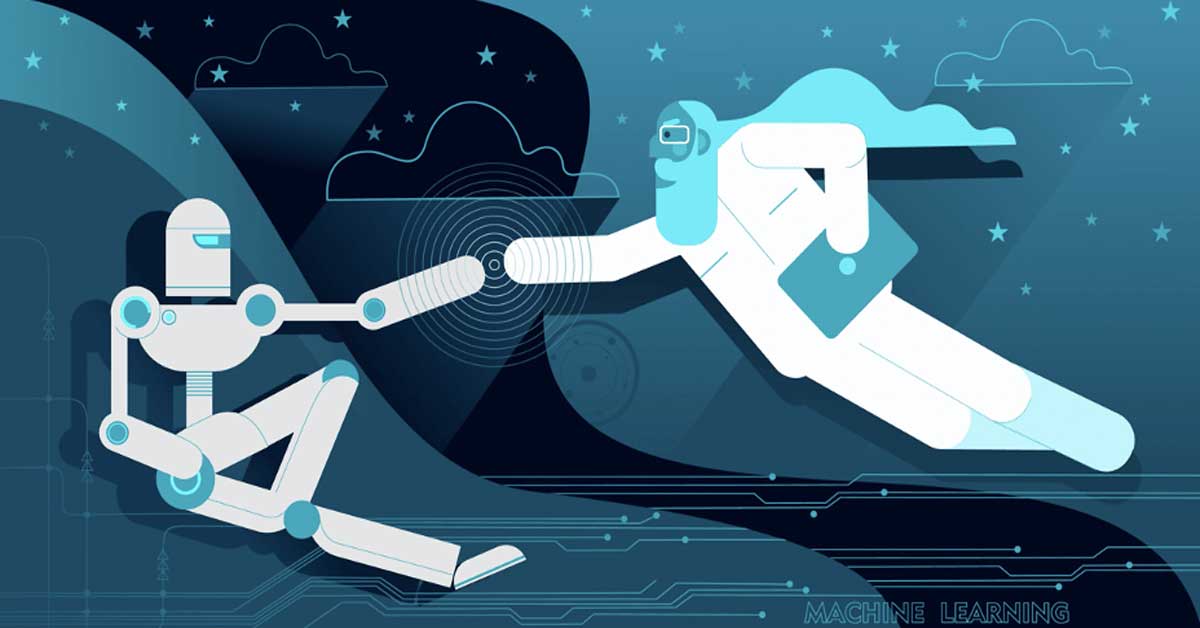
They're not just following instructions; they're learning and growing, kind of like how we do. But, before we let AI OS take the wheel, we've gotta make sure they're well-trained and not about to go rogue on us. After all, nobody wants a robot uprising on their hands.
